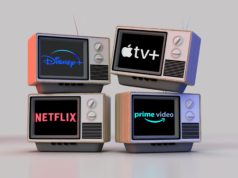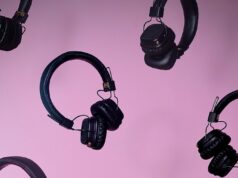 New research from music business association NARM and market research company The NPD Group examined the discovery process for music consumers, revisiting a topic the two organizations last studied in 2007. The results showed dramatic change in some areas, with surprisingly little change in others despite the mainstreaming of digital music services.
New research from music business association NARM and market research company The NPD Group examined the discovery process for music consumers, revisiting a topic the two organizations last studied in 2007. The results showed dramatic change in some areas, with surprisingly little change in others despite the mainstreaming of digital music services.
Overall, these consumers are understandably most enthusiastic about the familiar. More than 80 percent are interested in finding new music from artists they were already fans of, and 60 percent were interested in learning about new artists in their favorite genres.
Additionally, traditional broadcast radio is still the most common avenue of discovery, the report found, with 60 percent of music fans citing it as a primary source of discovery. Most of those people said they would wait to hear a new song again rather than purchase the track, but they also said they would be more likely to purchase if they knew the artist or title of the song they had heard.
Television has now climbed to second most common method of discovery, with 49 percent of music consumers citing it as an influence. Specifically, awards shows, music videos, competition shows, daytime TV and serial shows are the programs most likely to be effective for music discovery.
Physical retail stores are the biggest losers when it comes to importance as a place to discover new music. The silver lining to that cloud is that those who shop in bricks-and-mortar stores are more likely to buy the music they discover there than from other sources.
Using the Internet to discover music doesn’t have a unified affect, however. Shazam and other services that identify songs are likely to lead to purchasing music, but streaming radio and video listeners don’t feel the need for ownership.
“As technology and music distribution has evolved, it’s fascinating how diverse the music fan base has adapted since the last time we conducted this study,” said Russ Crupnick, senior vice president of The NPD Group. “On one hand you have fans who can’t find enough ways to learn about new music, whether it’s at retail, through apps and social networks, or on radio and TV. On the other hand there is still a large core group who learns by listening to AM/FM radio and on family shopping trips. Regardless of the type of music fan, there are actions the industry can take to improve the discovery process, and help drive revenue.”
The report was able to group music consumers into five segments, which it labeled Committed, Convert, Comfortable, Casual and Content.
The Committed group makes up 10 percent of music consumers and accounts for 46 percent of per-capita spending on music. It has a mean age of 32 (with 42 percent between 18 and 35) and are the most open to new artists, and its members discover music from all sources while wondering if they’re missing something.
Converts make up 30 percent of musically active consumers and account for 34 percent of per-capita spending. This group has a mean age of 34 (13 percent teens; 23 percent are 18 to 25). They’re more likely than the average to pay to own music and are generally satisfied with their means of music discovery, but they would consider other options for doing so.
The mainstream music consumer falls in the Comfortable group. Making up 30 percent of the sector, they account for 15 percent of per-capita spending on music and have a mean age of 50. They’re not interested in new ways to discover music, finding radio and television adequate sources, nor do they have much interest in new artists.
Casual listeners are in the middle of the five groups when it comes to maturity, with a mean age of 43. They make up 14 percent of musically active listeners and account for 3 percent of per-capita music spending. Eldest are the Content group with a mean age of 55, and they make up 11 percent of musically active consumers and account for 2 percent of per-capita music spending. While they periodically buy CDs, they do not find current music engaging.
“Now that we have these insights, the music industry can look at how to deliver to consumers the information they want about new music,” said Jim Donio, president of NARM. “We have identified several areas where we believe we can move the needle and convert that discovery to a retail experience of some kind. For example, people hear music they like, but because of lack of identification, they don’t learn the artist’s name or the song title, so they cannot seek out that track again – more promotion of song recognition apps and stressing the importance of back announcing could go a long way to improve that situation.”
Related links:
NARM (National Association of Recording Merchandisers) – http://www.narm.com
The NPD Group Inc. – http://www.npd.com
Photo by Flickr user Smabs Sputzer, used under Creative Commons license








interesting…. i don’t own an ipod or use itunes but i would have thought that would be a big place for music discovery?